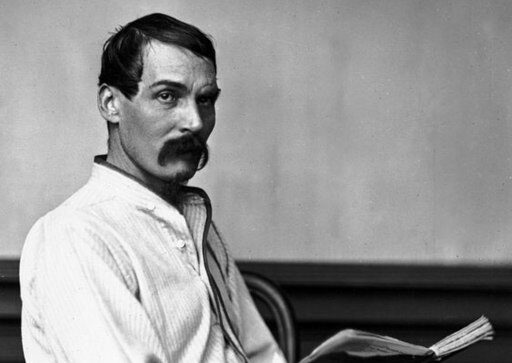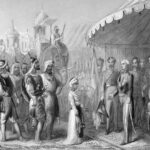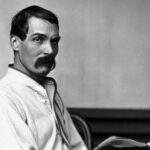10 Historical Figures Who Explored Places They Weren’t Supposed To Even Visit
- Jennifer Still
- May 21, 2025
 Public Domain
Public DomainThroughout history, there have always been people who refused to stay within the lines—those who defied rules, borders, and social conventions to go where they weren’t welcome. Whether driven by curiosity, ambition, religious zeal, or pure recklessness, these individuals stepped into forbidden lands, sacred spaces, or politically charged territories, sometimes risking imprisonment or death. Here are some historical figures who boldly explored places they were never meant to set foot in, and changed history in the process.
1. Ibn Battuta in Mali (14th century)
Moroccan traveller Ibn Battuta was one of the most widely travelled people of the medieval world. Though he was welcomed in many Islamic territories, he ventured into the West African Mali Empire at a time when much of it was politically unstable and largely inaccessible to outsiders.
He journeyed overland across the Sahara and visited Timbuktu and other key cities. Despite not always being warmly received, he documented customs, legal systems, and royal audiences, offering one of the only first-hand accounts of Mali’s court at the height of its power.
2. Giovanni da Pian del Carpine in the Mongol Empire (13th century)
Sent by the Pope as an envoy, Giovanni da Pian del Carpine ventured deep into the Mongol Empire shortly after it had ravaged much of Eastern Europe. Few Westerners had ever encountered the Mongols and lived to tell the tale.
Giovanni made it all the way to Karakorum, the Mongol capital, where he met with the Great Khan. His journey was perilous—crossing vast, hostile steppes—but his reports provided Europe with its first detailed intelligence on the Mongols. He wasn’t exactly invited; he just went anyway.
3. Alexandra David-Néel in Lhasa (1924)
Tibetan Buddhism scholar Alexandra David-Néel was the first Western woman to reach the forbidden city of Lhasa, Tibet—at a time when the region was entirely closed to foreigners. Disguised as a male pilgrim, she travelled on foot through the Himalayas, enduring extreme cold, food shortages, and constant risk of discovery.
She entered Lhasa in 1924 and stayed for two months under the radar before returning to India. Her detailed accounts of Tibetan spiritual life were groundbreaking, and her journey remains one of the boldest solo explorations of the 20th century.
4. Richard Francis Burton in Mecca (1853)
At the time, non-Muslims were strictly forbidden from entering Mecca, under penalty of death. Yet British explorer Richard Burton, fascinated by Arabic culture and Islamic tradition, decided to go anyway.
He disguised himself as an Afghan Muslim and joined a caravan to Mecca, where he performed the Hajj pilgrimage. Burton spoke Arabic fluently and knew the religious practices inside out, allowing him to blend in. His written account of the experience remains a landmark in travel literature—and a feat of extraordinary nerve.
5. John Hanning Speke in Central Africa (19th century)
While parts of Africa were already mapped and colonised by the 19th century, much of the interior was still unknown to Europeans. John Hanning Speke ventured into what is now Uganda and Tanzania in search of the Nile’s source.
The journey was fraught with danger—disease, hostile encounters, and treacherous terrain. The lands he entered were ruled by powerful kingdoms with no interest in foreign visitors. Nevertheless, Speke’s identification of Lake Victoria as the Nile’s source reshaped European geographical understanding.
6. William Seabrook in West Africa (1930s)
William Seabrook wasn’t a traditional explorer—he was a journalist and occult enthusiast. In the 1930s, he travelled to Haiti and West Africa to learn about voodoo and ritual practices that were off-limits to most outsiders.
His work is controversial—he often sensationalised the cultures he wrote about—but he gained access to secret ceremonies and spiritual spaces that were closed to foreigners. His book The Magic Island introduced the word “zombie” to Western readers.
7. Lady Hester Stanhope in Palmyra (1813)
In a time when women were expected to stay within rigid societal roles, Lady Hester Stanhope shocked British society by travelling extensively through the Middle East. In 1813, she became the first European woman to enter the ancient city of Palmyra in Syria.
Dressed in male Bedouin clothing and flanked by a caravan, she defied convention and local laws. The feat earned her celebrity status back in Britain and inspired generations of women travellers.
8. Heinrich Schliemann at Troy (1870s)
While Schliemann wasn’t barred from the site of Troy by any particular authority, he explored the ruins in a way that was heavily criticised—even in his own time. He ignored permits, bypassed archaeologists, and dug with such reckless abandon that he likely destroyed layers of historical evidence.
Despite this, his excavations brought Troy back into the public imagination and helped establish the connection between Homeric legend and historical fact. He went where others hesitated—and in doing so, permanently altered the field of archaeology.
9. Freya Stark in the Middle East (1930s-1940s)
British explorer Freya Stark travelled alone through parts of the Middle East that were effectively closed to Westerners, particularly women. She ventured into southern Arabia, including regions of modern-day Iran, Iraq, and Yemen, often with little more than a local guide.
Her deep respect for local cultures and her fluency in Arabic gave her access that many male travellers never achieved. Stark’s accounts shed light on remote tribal societies and geopolitical dynamics at a time when few Westerners had even seen a map of the region.
10. Thomas Coryate in Mughal India (1610s)
Thomas Coryate, an eccentric Englishman and writer, walked over 3,000 miles from London to India in the early 17th century. He travelled on foot through hostile territories, dodging political conflict and disease to reach the court of the Mughal emperor.
Coryate’s writing blends humour, observation, and raw travelogue. Though not barred explicitly from India, he entered as a vagabond rather than a diplomat or merchant—making his journey and the access he gained all the more surprising.
The world is full of boundaries—physical, political, and cultural.
However, some people just can’t resist crossing them. The historical figures on this list ventured into places they had no official right to enter, often at great personal risk. In doing so, they broadened our understanding of unfamiliar cultures, geographies, and spiritual traditions.
Their stories remind us that exploration isn’t just about mapping new lands—it’s about challenging the limits of what’s allowed, expected, or imaginable. Sometimes the most important journeys are the ones nobody gives you permission to take.



